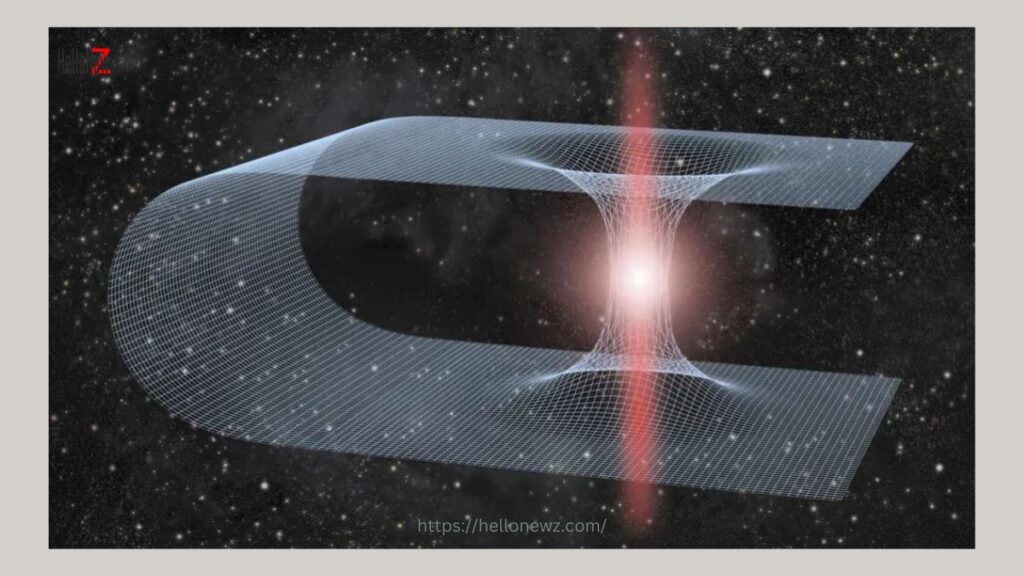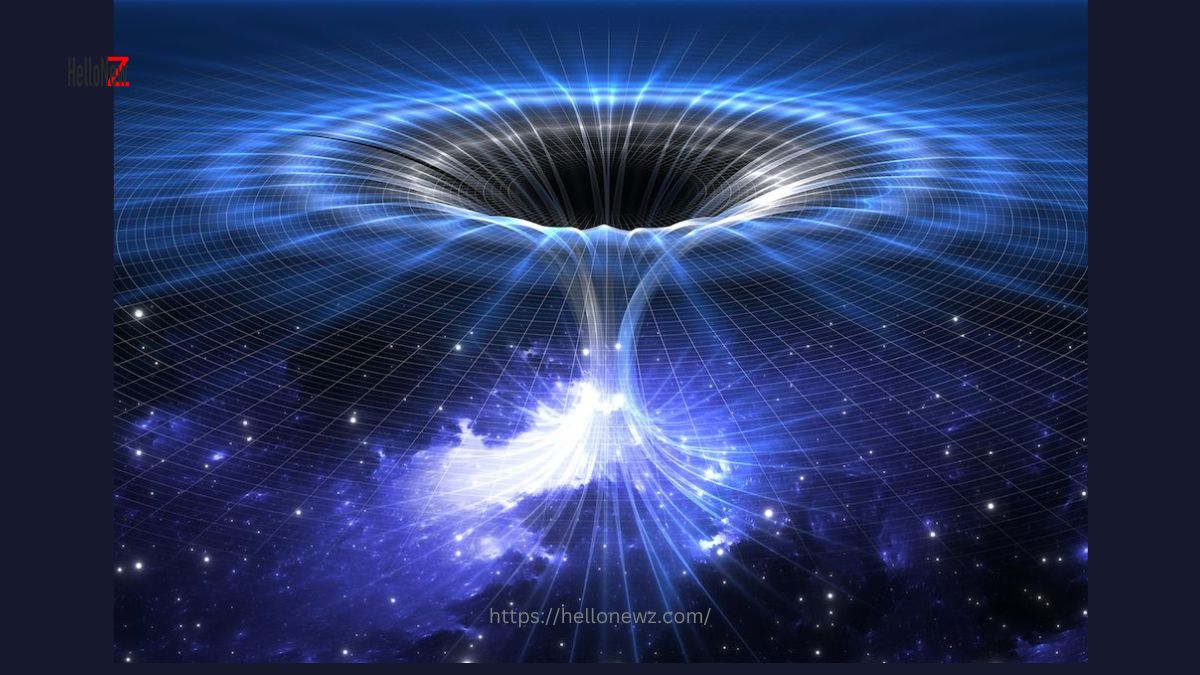Imagine a tunnel in the fabric of space-time, a wormholes, connecting the farthest corners of the universe. It sounds like science fiction, but Google’s Sycamore quantum computer has taken a giant leap towards making this mind-blowing concept a reality.
For decades, physicists have struggled with unifying two powerful theories: quantum mechanics and general relativity. Sycamore’s simulation of wormhole behavior offers a glimpse into how these seemingly disparate theories might be connected. By mimicking the behavior of a wormhole on a quantum computer, researchers have opened a new window into the profound mysteries of the universe.
Quantum Mechanics vs. General Relativity
To grasp Sycamore’s achievement, it’s essential to understand the relationship between quantum mechanics and general relativity. Quantum mechanics governs the bizarre behavior of atoms and subatomic particles, where energy exists in discrete packets called quanta. On the other hand, general relativity describes the force of gravity as the curvature of space-time caused by massive objects like stars and planets. These two fundamental theories have coexisted for years, each successful in its domain, yet they seemed like two puzzle pieces that just wouldn’t fit.
The Role of Wormholes
Wormholes represent an intriguing intersection of quantum mechanics and general relativity. They emerge from Einstein’s equations of general relativity, hinting at the possibility of shortcuts through the fabric of space-time. By simulating the behavior of a traversable wormhole, Sycamore provides a unique platform to test and refine our understanding of quantum gravity, aiming to formulate a unified theory that can explain the universe at its most fundamental level.

Google’s Sycamore Quantum Processor
Google’s Sycamore quantum processor operates on the principles of quantum mechanics, harnessing the strangeness of the quantum world to perform complex calculations. Unlike classical computers that rely on bits (either zeros or ones), quantum computers use qubits. Qubits take advantage of the quantum phenomenon of superposition, allowing them to exist in a combination of states (both zero and one) simultaneously. This unique feature gives quantum computers a significant advantage in tackling problems that are practically impossible for classical computers to solve.
Simulating a Wormholes
In this groundbreaking experiment, researchers used Sycamore to create a simplified model of a traversable wormhole by employing a concept called the AdS/CFT correspondence. By manipulating the qubits within Sycamore, researchers were able to simulate the transmission of information through the simulated wormhole. This success highlights the potential of quantum computing in advancing our understanding of fundamental physics and underscores the importance of interdisciplinary collaboration in pushing the boundaries of scientific knowledge.
Negative Energy and the AdS/CFT Correspondence
The quest to simulate a wormholes on Sycamore hinges on two crucial ingredients: negative energy and the AdS/CFT correspondence. Negative energy plays a vital role in keeping a traversable wormhole stable, acting as the scaffolding that prevents it from collapsing. While negative energy has been observed in limited laboratory settings, its existence in the quantities required for wormholes remains theoretical.
The AdS/CFT correspondence, a complex mathematical framework, acts as a bridge between gravity and quantum theory. It suggests a duality where a gravitational theory in a particular space-time (anti-de Sitter space) is equivalent to a specific quantum field theory without gravity. This duality allows researchers to study the intricacies of gravity by analyzing its quantum counterpart, leveraging Sycamore’s computational power to gain insights into the dynamics of wormholes.
Leading Researchers and Institutions
This groundbreaking experiment was the result of collective efforts from brilliant minds across the globe, including researchers from Google Quantum AI, Caltech, Harvard, MIT, and Fermilab. Leading the charge was Maria Spiropulu, a distinguished particle physicist from Caltech, and John Preskill, a theoretical physicist at Caltech. Their expertise, along with contributions from Google Quantum AI’s Harmut Neven and Fernando Brandão, was crucial in designing and executing the experiment on Sycamore.
The Holographic Universe: Reality as a Projection
The simulation of wormholes behavior on Sycamore has ignited excitement within the scientific community, breathing new life into the holographic principle. This principle suggests that our three-dimensional universe might be a hologram, a projection of information encoded on a distant two-dimensional surface. The recent experiment on Sycamore provides hints that this mind-boggling idea might hold some truth, potentially revolutionizing our understanding of space-time, information, and the nature of reality itself.
Unveiling the Secrets of the Cosmos
The successful simulation of wormholes behavior on Google’s Sycamore quantum computer is a beacon illuminating the path towards a deeper understanding of the cosmos. This groundbreaking achievement has opened up new avenues for exploration in quantum gravity, potentially revolutionizing our understanding of the universe and its fundamental laws. While the creation of a traversable wormhole remains in the realm of science fiction, the insights gleaned from Sycamore’s simulation could have far-reaching implications for various fields, including astrophysics and cosmology.
In astrophysics, this newfound knowledge could shed light on the mysteries surrounding black holes, neutron stars, and other extreme gravitational environments. In cosmology, the study of the universe’s origin, evolution, and structure, the simulation of wormholes could provide valuable clues about dark matter, dark energy, and the nature of the universe’s earliest moments.
The quest to unravel the universe’s deepest secrets is a journey without a final destination. The simulation of wormhole behavior on Sycamore is not the end of this journey but an exciting new chapter, which proves the boundless potential of human curiosity and ingenuity.
Table of Contents
Also Read: Sikkim Celebrates National Space Day with ISRO and NESAC

